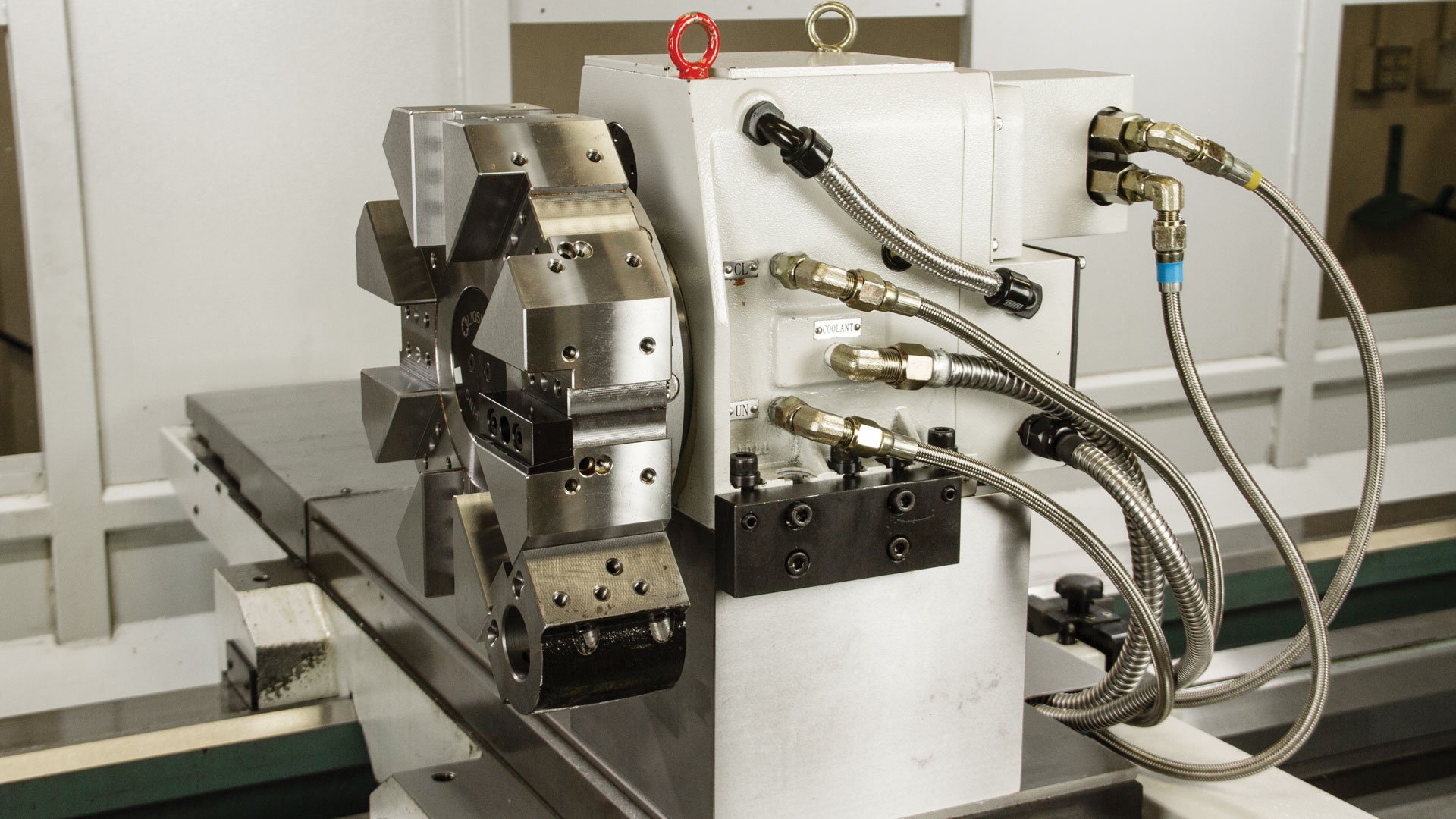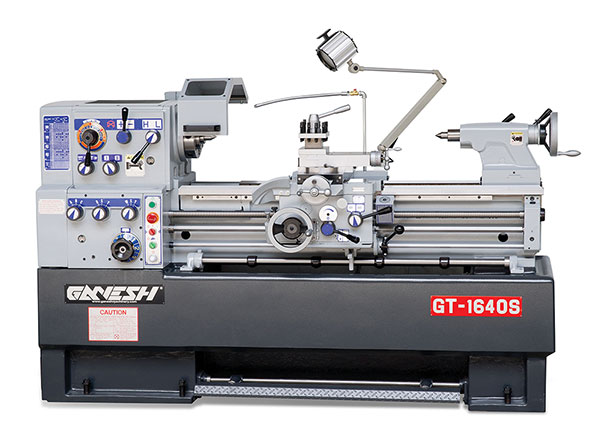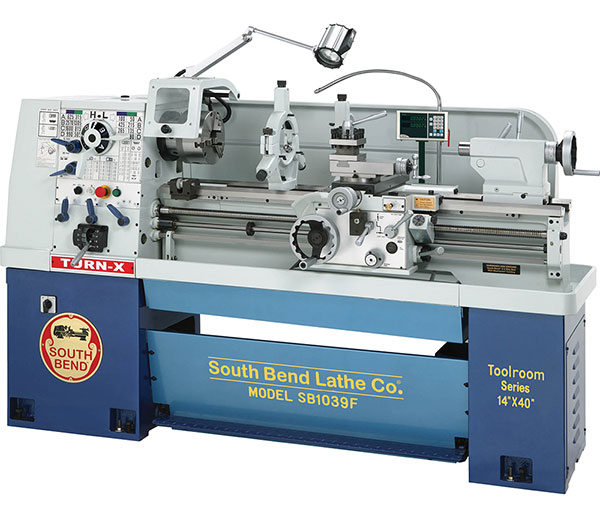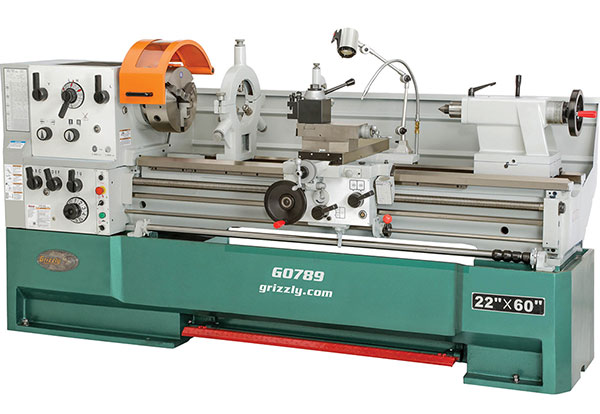More than 70 years after the first CNC lathe, toolroom models are as useful as ever
Matt Washkow sometimes finds himself at trade shows manning the exhibit for Grizzly Industrial Inc., where he’s director of products, when an attendee brings up a question about toolroom lathes he’s heard before.

“You’ll have people who are new to the industry … and they’ll say ‘why do you have these machines? We now have CNCs’,” he recalled. “I’ll even joke sometimes (and ask) when a CNC machine breaks what do you fix it with? It’s still a very necessary and needed machine.”
Lathes have been necessary for a long time. They were first made by the Egyptians, but it wasn’t until the 1800s that they had thread cutting abilities, according to historians. Seventy years ago, a June 1950 article in the New York Times heralded the first CNC lathe at Arma Corp., a subsidiary of American Bosch Corp. (previously part of Robert Bosch GmbH), Brooklyn.
The article reads, “The first demonstration of a completely new method of mass production in metalworking industries was staged yesterday … (of an electronic machine) using a ‘piano-roll’ operating device made directly from blueprints. It provides precision production cycle ontrol on a standard lathe without human aid, except in loading and unloading the machine.
“H.C. Guterman, president of Arma, and C.T. Foxx, chief engineer, showed that with a model which cost only about $1,500 [equal to $16,556 in today’s dollars, adjusted for inflation], electronic devices can control repetitive output electronically so as to save as much as 75 percent of the time normally required to make a standard machine part to tolerances as fine as plus or minus a fraction of one-thousandth of an inch.”
A Lumbering Brute
For all of the advantages of a CNC lathe outlined in the newspaper, for one-off repairs and replacement parts with tight-tolerance fits and finishes, the toolroom lathe makes a CNC look like a lumbering brute, said Washkow.
“A good machinist can get straight to work (on a toolroom lathe) off a simple sketch with a few critical dimensions thrown in while a CNC requires the part to be drawn and programmed first,” Washkow said. “Even then, the program may need to be adjusted to produce the degree of accuracy required on critical dimensions.”
Washkow, who’s been with Grizzly, based in Bellingham, Wash., for 27 years, knows that toolroom lathes are like the Atlas of most high-quality machine shops, and are called on to support the entire industrial facility.
“A toolroom lathe has high-precision spindle bearings in a heavy-duty headstock, hardened bed ways, a pressurized oil bath headstock, a totally enclosed oil bath gear box, carriage and cross-slide power feed, a quick-change gearbox with both metric and Imperial feed rates, digital readouts, variable spindle speed and a foot brake,” he said.

In general, toolroom lathes are high-precision machines used in-house to support a facility vs. doing medium or large production runs of individual components. They’re used for one-offs, prototypes, to repair older tooling or to quickly make a new tool, to fix worn or broken parts, small production runs, and for building jigs and fixtures.
These versatile lathes are designed and engineered to be easy to use. They’re made to allow skilled machinists like the ones Washkow cites to make simple or complicated parts in small quantities quickly. Because of that, they need to be versatile so machinists can select the best way to make a part.
They’re also relatively affordable. The toolroom lathes offered by the companies cited in this article cost multiples of tens of thousands of dollars vs. the hundreds of thousands of dollars price tag of many machine tools. Many consider toolroom lathes to be a first step into CNC machining.
Grizzly offers many variations of toolroom lathes in both the Grizzly and South Bend brands.
In many cases, these industrial workhorses haven’t changed much either, Washkow said. They may have improved bearings, digital readouts and variable speed spindles, but toolroom lathes are a proven design that serves their purpose and, outside of small improvements, probably won’t change much in the future, he said. Toolroom lathes are not where manufacturers are putting their R&D departments to work to make them better. “Advancements are really being made with CNC machines,” he said.
Easier Operations
Yet, toolroom lathes are advancing even if it may be true that CNCs are getting more favor in R&D budgets. Machine tool manufacturers are incrementally improving them. They are also making many of them hybrids, operated manually but also equipped to be used in teach mode. This is sometimes called conversational mode, said Ravjeet Singh, general manager at Expand Machinery Inc., Chatsworth, Calif.

“We ourselves use Fagor controls (Fagor Automation USA, Elk Grove Village, Illinois),” said Singh. “They’re very popular here in the United States, have a good teach mode and use G-code to run it.” With teach mode, operators fill in their starting and desired parameters on a digital readout screen and the machine’s controls fill in the G-code.
“Every control company in the world is trying to do that because the easier they make it for the operators, the more controls they will sell,” Singh said.
Expand has eight models of manual toolroom lathes, ranging in size from 11-55" swing (27.94-139.7 cm), 18-315" (45.72-800.1 cm) between centers and power from 3-40 hp (2.24-29.8 kW.)
Singh said that, in his opinion, Fagor and Heidenhain, Schaumburg, Illinois, focus on an operator using teach mode, while controls from FANUC America Corp., Rochester Hills, Mich., and Haas Automation Inc., Oxnard, Calif., rely more on the operator programming the G-code that runs the machine.
Toolroom Lathes for Artisans
Small quantities of parts, e.g., one to 10, are often run on manual machines, said Michael McGarry, national sales manager, TRAK Machine Tools – Southwestern Industries Inc., Rancho Dominguez, Calif. Although they can require special tooling or multiple setups, “adding a toolroom lathe significantly reduces the machining time and dramatically improves the quality,” he said. “Time savings are said to be ‘twice as fast’ but if there is any complexity to the part, the time savings can be six to eight times as fast.”
Using expensive turning centers for small quantities is inefficient, McGarry said, as compared to manual toolroom lathes.
“Centers take longer to set up, often longer than the actual run time of the part,” he said. “Plus, why tie up an expensive production machine that could be producing large quantities of parts when you could run a less expensive toolroom lathe and get the job done faster?”
In both scenarios, the downsides of CNC lathes are the time and expense that it takes to make the part. A toolroom lathe can allow a skilled machinist to be much more efficient and, therefore, the job much more profitable or less expensive to operate in the engineering support-type shops.

For some jobs, the need to write G-code to run a CNC lathe has potential downsides in more ways than one. It takes time, it requires a certain set of skills to do, and having to write a program makes it harder to make changes on the fly.
For example, if toolmakers want to change the diameter on workpieces they are machining on toolroom lathes, they can easily make the adjustments in conversational mode. There’s no need to edit any G-code. If the workpiece is a prototype and it’s successful, the operator can then convert the CNC program into a production application. Until the prototype is proven to work, though, the toolroom lathe is the most efficient means of machining the workpiece.
Operating a toolroom lathe and a CNC require different skill sets, too. The CNC requires programming ability while the operator of a manual toolroom lathe has to know about different materials and what tooling it will take to get the proper finish.
“Toolroom lathes are designed to allow skilled machinists to make simple or complicated parts in small quantities very quickly,” said McGarry. “Skilled machinists are artisans.”
TRAK makes six different toolroom lathes that can be operated manually or via CNC. They range in size from a 14-33" (35.56-83.82-cm) swing, 30-118" (76.2-299.72 cm) between centers and spindle motors from 5-30 continuous hp.
New TRAK toolroom lathes feature the ProtoTRAK RLX control, according to McGarry. The ProtoTRAK is a large touchscreen that makes navigation easier. In addition, there are self-help videos within the control that allow the machinist to learn what’s new when software is updated or for support while using the control.

Considerations When Purchasing a Toolroom Lathe
A heavy machine means heavier cuts, greater rigidity, and less vibration. For the longest life and highest precision, always opt for a lathe with a heavy cast iron base. Anything less than 2 hp or so will be inadequate for metal cutting.
The chuck must be large enough to grip whatever workpieces the machinist has in mind. At a minimum, they need a three-jaw and four-jaw chuck, as well as a faceplate, live center, and various Morse taper adapters for the tailstock.
Also important are the type of spindle bearings used, how many there are, and how far apart they are. A cheap spindle with low-quality bearings will cause nothing but problems a year or two down the road.
A wider bed width provides greater stability and better results in turning operations.
A foot brake for stopping the spindle quickly is a necessity. A geared headstock with multiple speed ranges helps to make sure the machinist has plenty of available power. Hardened and ground ways assure years of productive use. A job button makes gear changes easier. Buyers should make certain a lathe has the right thread-cutting capabilities.
The tool post should make it easy to change and adjust tools. For shaft work and other longish parts, a steady-rest helps make the job easier. A digital readout makes lathe operation much easier and less prone to mistakes and should be acquired if affordable.
For those in the market for a gunsmith lathe, any machinist would do himself a favor by extending his search to include industrial lathes, including toolroom lathes. It’s quite possible they’ll save some money by buying a more general-purpose lathe, and will almost certainly have a higher-quality, longer lasting machine to boot.
—Kent Industrial USA Inc., Tustin, Calif.
"machine" - Google News
June 21, 2021 at 07:00PM
https://ift.tt/2TOjOvR
Machine Tools for Artisans - Advanced Manufacturing
"machine" - Google News
https://ift.tt/2VUJ7uS
https://ift.tt/2SvsFPt
Bagikan Berita Ini














0 Response to "Machine Tools for Artisans - Advanced Manufacturing"
Post a Comment